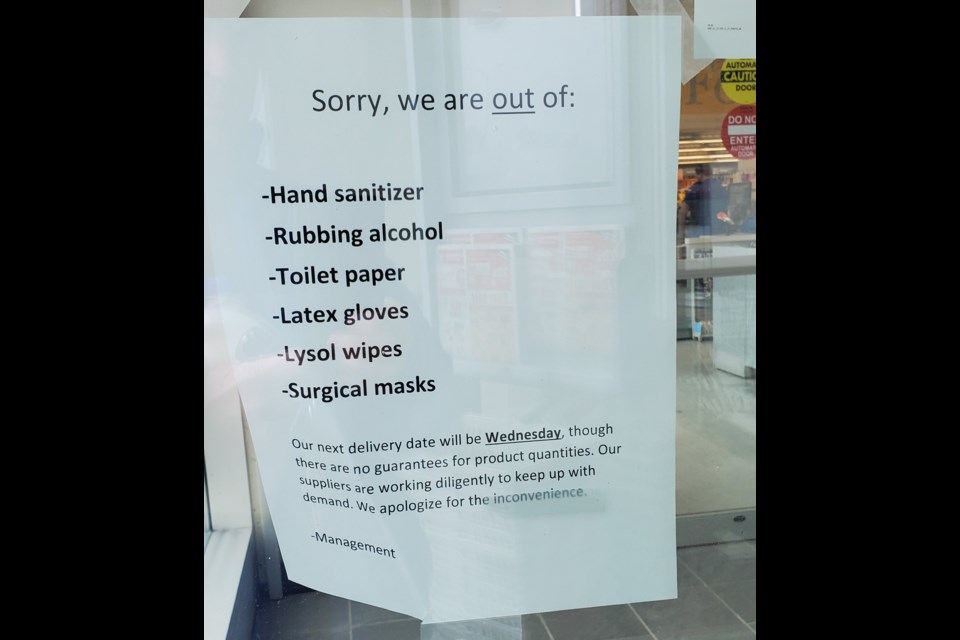Some store shelves continue to be bare as stores struggle to keep up with a surge of demand, however, government officials continue to reassure customers that there is plenty of food and the supply chain is strong.
See: Health Canada acts to boost supply of hand sanitizer, disinfectants, swabs, masks
It is easier on the supply chain if people gradually build up their household stores instead of making large-scale purchases all at once, but to do this, it's better to add a few extra items to your grocery cart every time you shop.
One thing that is flying off the shelf is hand sanitizer. It's presently hard to get but you can learn how to make your own hand sanitizer here.
Also here are some hand sanitizer tips from the Shoppers Drug Store website.
Featuring content from MediResource Inc.
Look around and you're bound to see an alcohol-based hand sanitizer somewhere nearby. They're everywhere these days – in washrooms, in kitchens, dangling from cords attached to kids' backpacks and emerging from women's purses, perched on the walls of school cafeterias and along the halls of hospitals and nursing homes.
There are lots of good, scientifically-proven reasons why alcohol-based hand sanitizers are everywhere:
- When you're not able to wash your hands, hand sanitizers offer a safe and effective substitute for a soap-and-water scrub.
- Gels containing at least 60% germ-killing alcohol can protect you and your family from the bugs that cause colds and gastrointestinal infections.
- Health care workers in hospitals and other health care settings use alcohol-based hand gels. When their hands are not visibly soiled, the alcohol-based sanitizers are more effective than normal hand-washing or cleansing with antibacterial soap.
But before you go toss out all the bars of soap in the house, consider these hand sanitizer truths:
- Hand sanitizers do not clean off visible dirt. They're meant to kill germs, but if you can see dirt, grime, blood, or anything else, you need to wash with soap and water.
- Not all sanitizers effectively kill germs. Inspect the label carefully. Make certain that the sanitizer contains a concentration of 60% to 95% ethanol (ethyl alcohol) or isopropanol (isopropyl alcohol). Anything less than 60% will not effectively kill germs. Watch for these sub-par formulations in the bargain bin or at dollar stores.
- Sanitizers can be poisonous. These products contain high levels of alcohol, and some come in tantalizingly scented varieties. Children can be tempted to taste the gel. A tiny lick at their sanitized skin shouldn't hurt, but ingesting too much can cause alcohol poisoning. For the sake of cleanliness and convenience, many parents are sending mini-bottles of sanitizer to school with their young children. Some newer backpack models even come with an attachment for them! Kids may consider it a toy – or a treat – and share it with friends. Teach your children sanitizer safety and encourage them to use the product properly and only when absolutely necessary.
- The ingredients can irritate. Alcohol is drying to the skin, and added fragrances may trigger allergic reactions and irritations. Many hand sanitizers contain moisturizers to counterbalance the drying effect.
- Sanitizers must be used properly to work effectively. To properly apply hand sanitizers, you need to first remove any rings. Use a dime-sized drop of the gel and rub your hands together, palm to palm. Then, use the palm of one hand to rub the gel into the back of the other hand and between fingers, and vice versa. Don't forget to rub around the thumbs, as well. Continue to rub the gel into your hands until they feel dry, usually for at least 15 to 30 seconds. You shouldn't need a towel to dry off.



